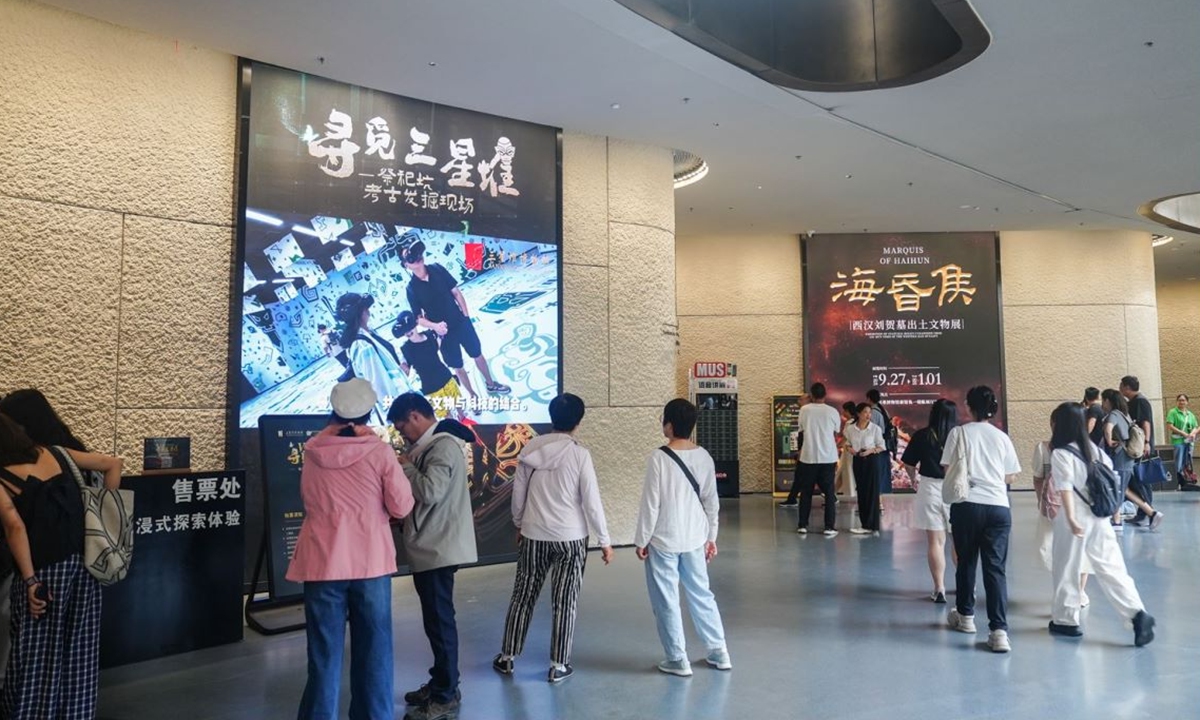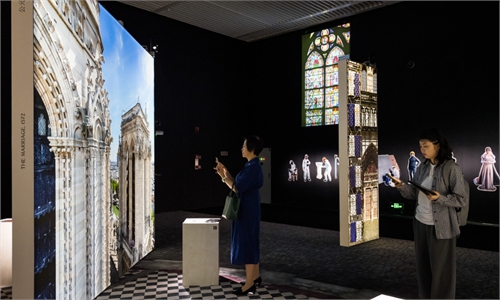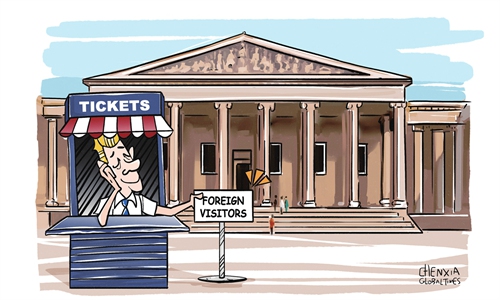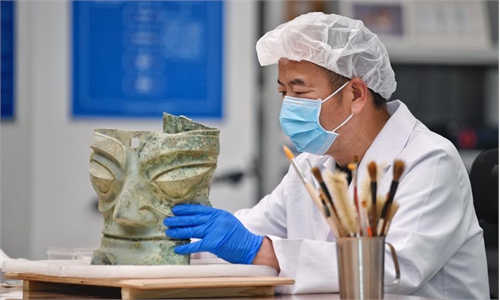ARTS / CULTURE & LEISURE
Flexible museum hours, 'Wukong + travel' combo, cultural tourism booms during National Day holidays

Tourists visit the new building of the Sanxingdui Museum in Chengdu, Sichuan Province, during the National Day holidays. Photo: Courtesy of the Sanxingdui Museum
As China's seven-day National Day holidays continue, the nationwide cultural tourism industry is witnessing a boom. The total number of domestic tourist visits reached 104 million on Wednesday, with cultural sites like museums and red tourist attractions becoming top destinations for the public.
Iconic sites such as the Palace Museum in Beijing and the Sanxingdui Museum in Chengdu, Sichuan Province, have launched special exhibitions dedicated to the holiday season. Featuring a total of 126 pieces of relics, the Chengdu museum's collaboration with the Nanchang Relic Museum for Haihun Principality of Han Dynasty offers visitors an "multi-dimensional" experience to China's archaeological culture.
"I'm stunned by the bronze and gold artifacts discovered from both sites. Their differences made me see the dimensions, like a kaleidoscope, [into] our ancient cultures," Jia Yuenan, a 35-year-old traveler from Chongqing Municipality, told the Global Times.
Jia is one of those tourists have who made a reservation "two weeks in advance." Along with the facility in Chengdu, a large number of stellar museums nationwide have been fully booked until the end of the holidays on October 7. In response to the rising demand, many sites have launched "extended opening hour" policy.
Several provincial sites such as the Henan Museum, Hubei Provincial Museum and Hunan Museum have extended their opening hours ranging from 6 pm to 7 pm. The schedule remains flexible as well. Zhang Xiaoyun, the director of the Hubei Provincial Museum said that the museum's extended opening hours were put in place based on analyzing booking numbers and the potential visitor traffic flow in Wuhan, capital of Hubei.
"Aside the prolonged opening hour policy, 'night tours' and 'shuttle buses' are all means being deployed by museums to increase capacity. These measures show how experienced the industry is helping meet increased public engagement and enthusiasm," cultural sociologist Xu Shuming, told the Global Times.
The museum sector is one of the few truly experienced in managing visitors' enthusiasm for culture. Many regions and cities have adopted a "local culture+" strategy to offer visitors unique and niche cultural tourism experiences.
More than 1,100 cultural events and shows were launched in East China's Fujian Province for engaging visitors to its Hakka culture, the Marine Silk Road culture and also the province's tea tradition. Dedicated to China's gold stone sealing and calligraphic cultures, several exhibitions showcasing "Xiling Yinshe," also known as the Xiling Seal Art Society has been launched at the Xiling Wulin Art Museum in Hangzhou, Zhejiang Province.
"Wukong + tourism" has become the Shanxi Province's new tourism strategy after the game made its small Xixian county a trending destination for young visitors.
Catering to the patriotic gist of the National Day holidays, red tourism attractions were packed with visitors, primarily young people. Unlike traditional sightseeing, sites such as the Site of the First National Congress of the Communist Party of China in Shanghai have introduced music events to attract visitors.
"Cultural tourism is about providing visitors with immersive experiences, and China's prolific and diverse cultures can sustain the growth of this particular touristic sector," Xu the expert told the Global Times.



